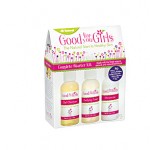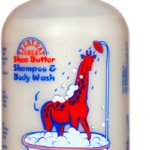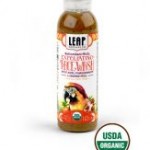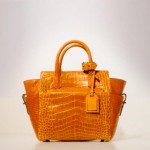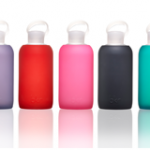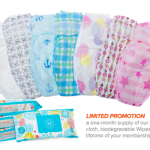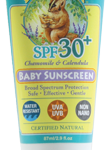If I had a nickle for every pediatrician, L&D nurse, or mom friend that recommended petroleum jelly for one thing or another, I’d be a rich woman. Petroleum jelly (aka Vaseline) comes from oil (one of those fossil fuel things). As Melissa Breyer, editor of Healthy Living, recounts, it was discovered by a chemist that noticed the residue left on oil drilling rigs. This goop, called “rod wax,” he then distilled to petrolatum. Polycyclic aromatic hydrocarbons (PAHs) are common contaminents in petrolatum and are linked to cancer by many sources, including the EPA. In addition, different (and unregulated) manufacturing processes render what consumers know as petroleum jelly harmful in myriad ways. Fragrance, artificial color, preservatives, parabens and other chemicals are added to Vaseline/petroleum jelly to affect consistency, skin absorbtion, smell and shelf-life.
“But my jar just says 100% ‘petroleum jelly’.”
That’s right, you won’t find these red flag ingredients on the package. Thanks to the lack of regulation of cosmetics and products in the US, they are not required to list all ingredients. See the actual contents of standard Vaseline (Unilever) here, thanks to EWG Skin Deep testing. These additives have been shown to cause cancer, developmental/reproductive toxicity, organ system toxicity (non-reproductive), biochemical and cellular level changes, allergies and other skin irritations.
Under the circumstances, it’s quite disturbing that Tyra Banks started a “Vaseline Frenzy” when she told the world it was her #1 beauty secret and that teens are being advised that Vaseline is their best friend. Add this to the 16 (on average) other toxic beauty and skin products people use on a daily basis and it’s not hard to see why we have sky rocketing infertility, cancer, and allergy rates, in additional to a significant increase in many behavioral disorders. (That’s another topic entirely but check out this simple list of toxins affecting learning and behavior in children from the Healthy Children Project.)
So please, do not slather this on your baby’s butt to prevent diaper rash (this doesn’t work anyway because you’re most likely trapping moisture in if you just used a wipe, which causes … wait for it … diaper rash). Note that popular products like Desitin contain petrolatum, in addition to sodium borate and methlyparaben (the worst paraben).
Don’t use petroleum jelly on yourself for that matter.
For dry skin or lips, try organic Badger Baby Balm. 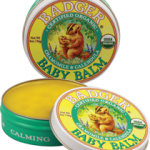 I linked around and Avalon Organics Un-Petroleum Multi-Purpose Jelly received good reviews and even recommendations for being nontoxic. Unfortunately it does contain tocopheryl acetate, a chemical compound that consists of acetic acid and tocopherol (vitamin E). The chemical concerns surrounding tocopheryl acetate, although moderate, include cancer (one or more animal studies showed tumor formation at high doses), environmental and other issues. For details, see EWG’s Skin Deep database.
I linked around and Avalon Organics Un-Petroleum Multi-Purpose Jelly received good reviews and even recommendations for being nontoxic. Unfortunately it does contain tocopheryl acetate, a chemical compound that consists of acetic acid and tocopherol (vitamin E). The chemical concerns surrounding tocopheryl acetate, although moderate, include cancer (one or more animal studies showed tumor formation at high doses), environmental and other issues. For details, see EWG’s Skin Deep database.
Organic olive oil works well too (even on cradle cap). We also like Burt’s Bees Nourishing Baby Oil and, for lips, Burt’s Bees Wax Lip Balm. Everyday Shea’s Baby Lotion looks promising (we use their Baby Shampoo and Body Wash). If you must use a cream for each diaper change, we’ve noted before Burt’s Bees great diaper ointment. If you are treating a rash or irritation, use a zinc oxide cream that doesn’t have added chemicals. Bourdreaux’s Diaper Rash Ointment in Natural has the highest percentage of zinc that we’ve found and worked like a charm on my 4 month old.
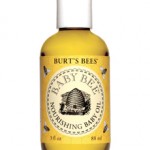 Happy lubing.
Happy lubing.

